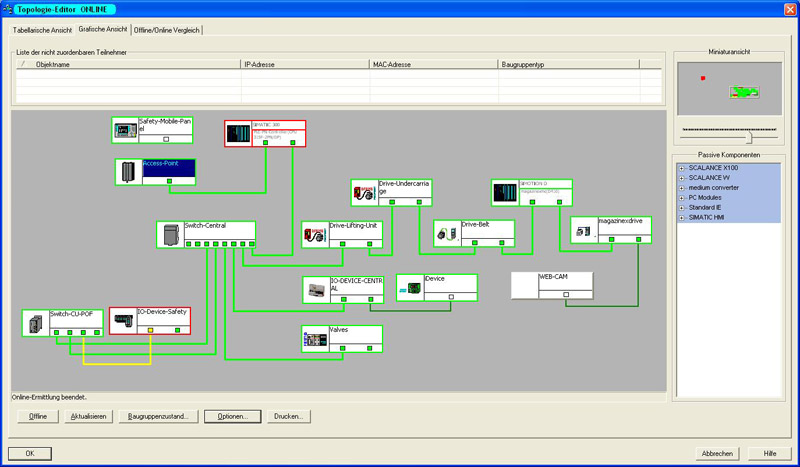Unlike other competitor networks, all PROFINET devices support Link Layer Discovery Protocol (LLDP) which is defined in IEEE standard 802.1AB. There are multiple reasons for LLDP support. The first is to be able to discover, check, and maintain the topology of the PROFINET network and obtain diagnostics if something changes. The second is for easy device commissioning when setting up the network and third would be simple device replacement in case any device fails. Finally the fourth would be to share network line and switch delays for high speed motion applications.
What is LLDP?
 First off, to describe what LLDP is, think of neighbors or a neighborhood where you’ve been. Did you know everyone that lived there at every house? What about the people who live at the farthest end of the street? A device which supports LLDP will send a message to their neighbor stations on each switch port every few seconds to identify itself and give network related information. This is then stored in a data table known as the Discovery Management Information Base (MIB). This table can be read out with Simple Network Management Protocol (SNMP) or through a PROFINET acyclic read record request. Information stored in the device includes system name and description (type of device), port name and description, IP management address, system capabilities, other network information and more. By reading this LLDP information you can map the entire PROFINET network (the entire neighborhood). Now you know the name and information from each device, including the one at the end of the line (street)!
First off, to describe what LLDP is, think of neighbors or a neighborhood where you’ve been. Did you know everyone that lived there at every house? What about the people who live at the farthest end of the street? A device which supports LLDP will send a message to their neighbor stations on each switch port every few seconds to identify itself and give network related information. This is then stored in a data table known as the Discovery Management Information Base (MIB). This table can be read out with Simple Network Management Protocol (SNMP) or through a PROFINET acyclic read record request. Information stored in the device includes system name and description (type of device), port name and description, IP management address, system capabilities, other network information and more. By reading this LLDP information you can map the entire PROFINET network (the entire neighborhood). Now you know the name and information from each device, including the one at the end of the line (street)!
Using LLDP with PROFINET
So to now move this into a PROFINET system context, you can setup your PROFINET system including the controller and devices. During startup, the devices begin to exchange LLDP information and the topology information can be read from the devices by the PROFINET engineering tool. This topology can now be saved as your ‘baseline’ and downloaded into the PROFINET IO controller. If any changes to the topology are detected, the controller will get an alarm from the affected station (for example ports got swapped) or the station’s neighbor (downstream device is disconnected from the network, cable break). By using the mechanisms in PROFINET, this is like a “neighborhood watch” added to our system.
Simple Device Commissioning and Replacement
Another benefit of using LLDP with PROFINET is simple device commissioning and device replacement. Based on the known topology the controller can bring up a device and automatically assign its device name using an LLDP ‘alias’ name, so this makes bringing up the network a cinch. So a broken / failed device could also be replaced and come up automatically without using any software tools. We’ll cover this in a separate article in more detail.
Network Measurement information
The fourth and final benefit of LLDP would be the interchange of network delay information between the device switches. This information can be read out to see the real time network characteristics and delay values.
Network Management made simple
So, if you want easy commissioning and the best diagnostics and measurements out there to know how things are connected to your network (even your neighborhood), using PROFINET with LLDP “under the hood” makes this all possible. To find out more and see LLDP in action, attend a PROFINET training class soon.
 Do you want to learn more about PROFIBUS or PROFINET?
Do you want to learn more about PROFIBUS or PROFINET?
The PROFI Interface Center has you covered with PROFIBUS and PROFINET Certified Network Engineer classes.
Our certification classes are intense, hands-on courses. You will learn how the underlying technology works from the application to the frame level. After passing both a practical and written exam, you become certified.
For more information, contact us or visit our website.
